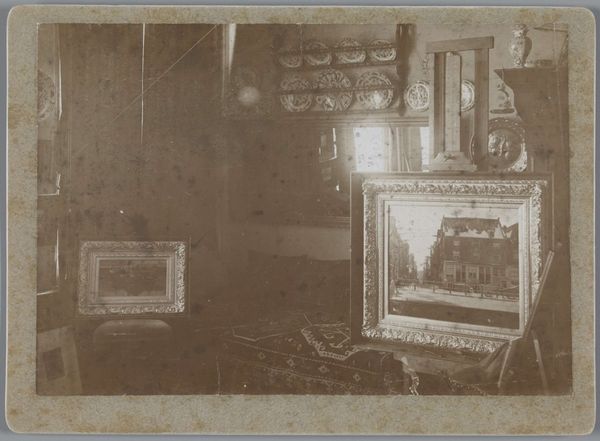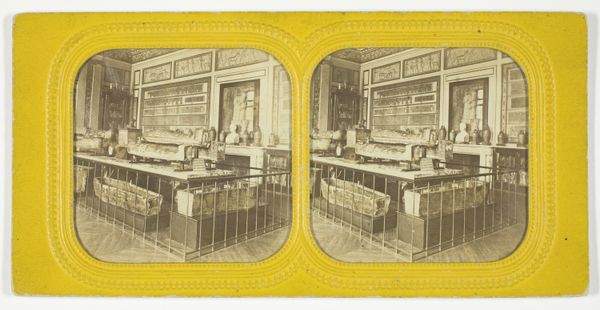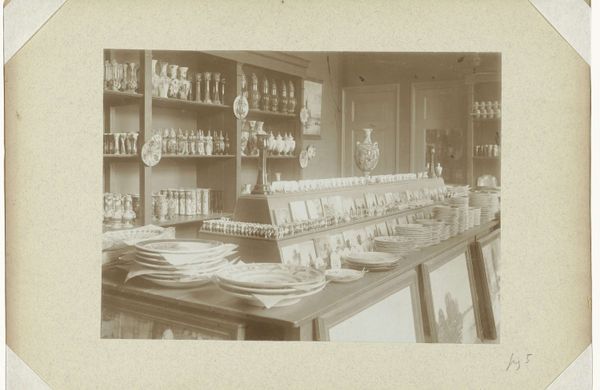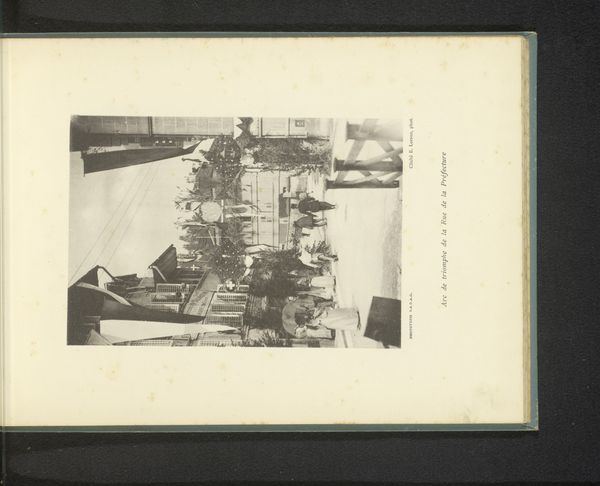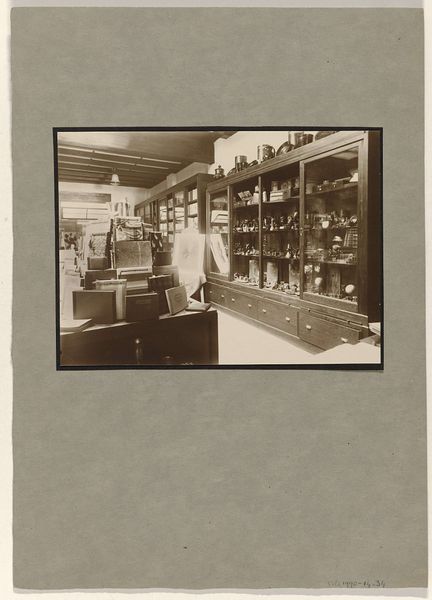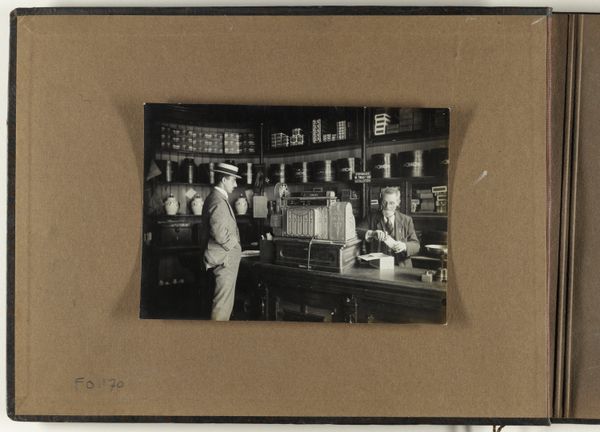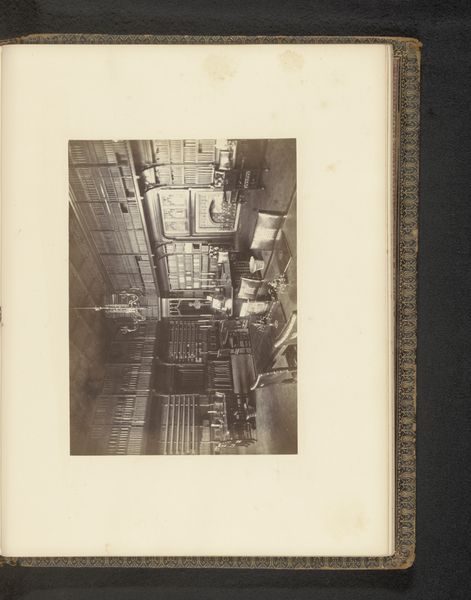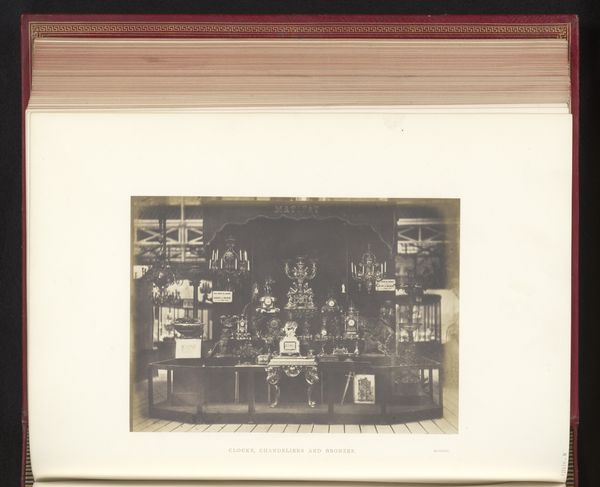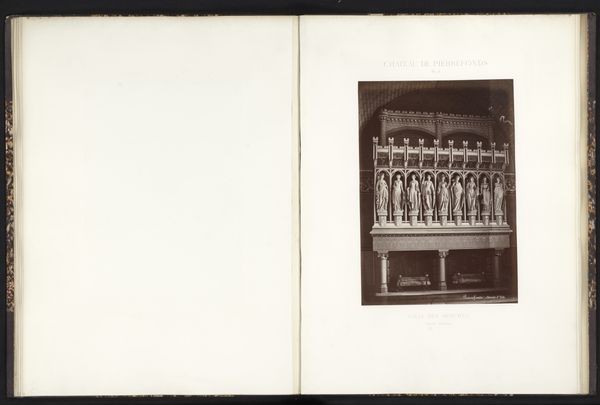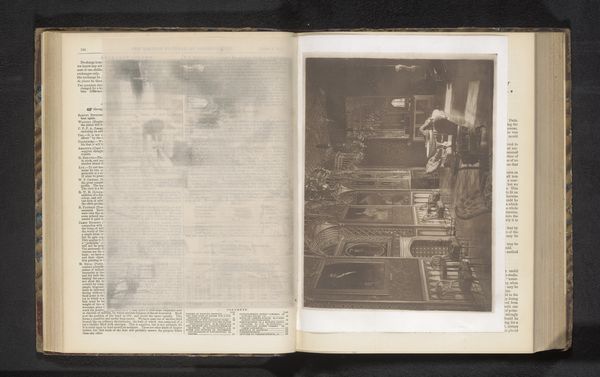
photography
#
portrait
#
still-life-photography
#
16_19th-century
#
water colours
#
photography
#
united-states
#
watercolor
Dimensions: 8.8 × 12.1 cm (3 1/2 × 4 3/4 in.)
Copyright: Public Domain
Curator: Here we have an early example of American photography from around 1850, “S. P. Peck Apothecary” currently residing here at the Art Institute of Chicago. Editor: Wow, there's something haunting about this image. It has such clarity but also feels shrouded in a turn-of-the-century melancholia. The dense rows of identical bottles also create a great sense of depth and pattern. Curator: Absolutely. This photograph provides a rare glimpse into the professional spaces of the mid-19th century, showing not only the arrangement and wares, but implying much about the distribution of knowledge. Apothecaries were critical public figures then, bridging commerce, healthcare and, of course, a very particular vision of chemistry. Editor: I'm curious about the sheer volume of identical jars, and what were they all for? How precise could measurement be? Who produced them? We often romanticize historical trades like this, but thinking about material limitations brings an honesty to what making and providing remedies would involve on a day-to-day level. It would be pretty labor-intensive work to acquire, process, store, and dispense so many ingredients. Curator: Precisely! The standardization that seems almost mundane to us now—those uniformly sized and filled jars—was a product of burgeoning industrial practices and expanding trade networks. It is very evocative to remember how public trust was placed on businesses who procured those ingredients at scale. And beyond this, it shows the degree to which early scientific practitioners and businesses sought to standardize and quantify their medicines. Editor: Also, it's worth noting this isn’t a painter's idealized rendering of a shop, but something closer to mechanically reproduced reality – a different claim to truth. You're less likely to miss bottles in neat rows, more apt to confront just the vast quantities of product, even if dimly captured. Curator: Well put. It brings us into the apothecarist’s own experience of his trade – this photographic reality. Photography’s democratizing effects extend beyond portraiture. Now, even commerce can be recorded for all to see. Editor: For me, considering that kind of labor adds so much to my understanding, this image now reads as almost industrial rather than quaintly vintage. Curator: Agreed. Seeing it less as a picture and more as a material record, does prompt more thoughtful reflections on how production has shaped society since the dawn of photography.
Comments
No comments
Be the first to comment and join the conversation on the ultimate creative platform.
